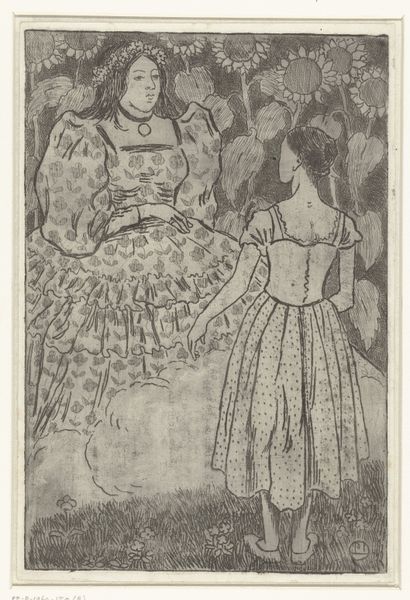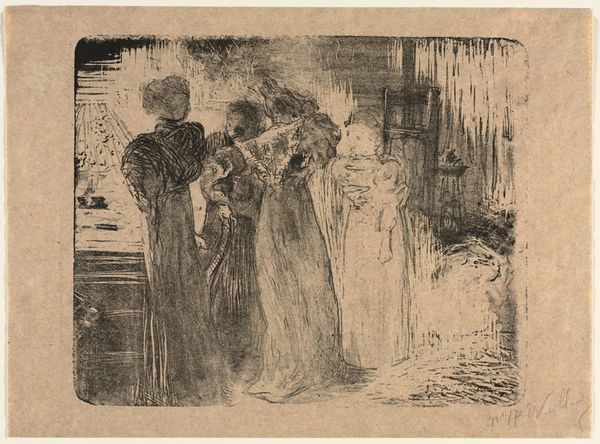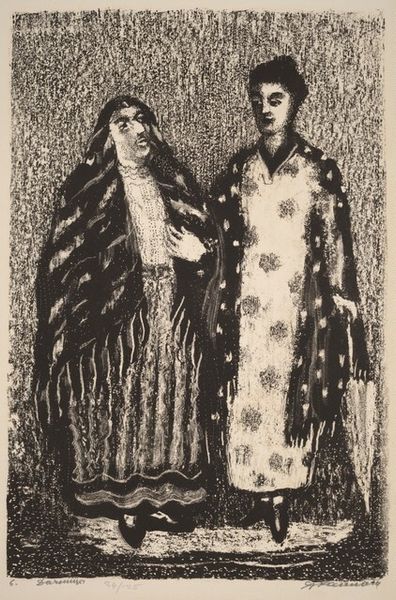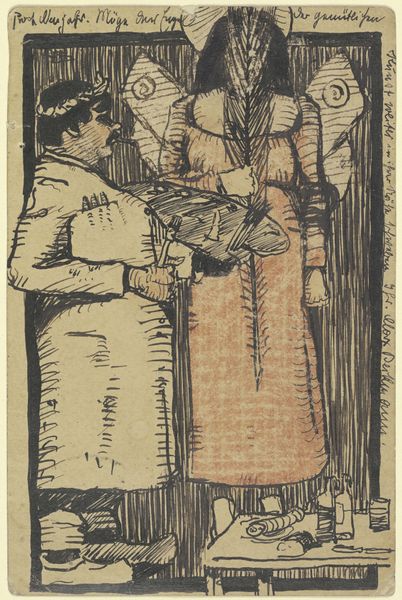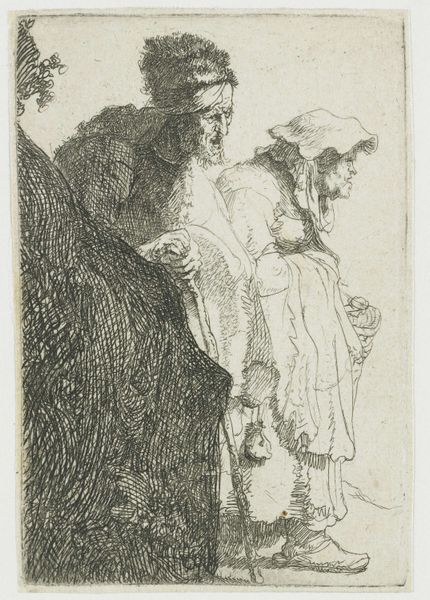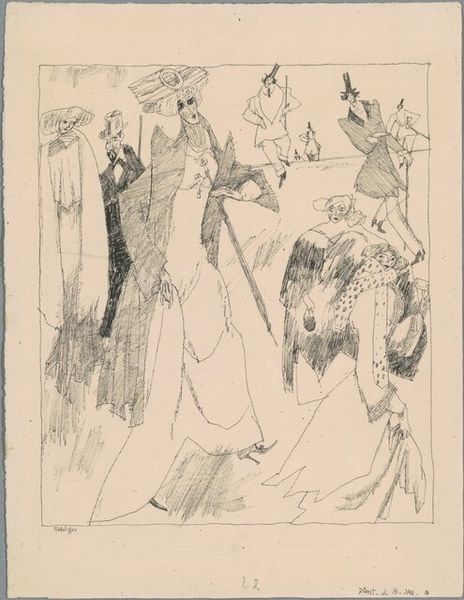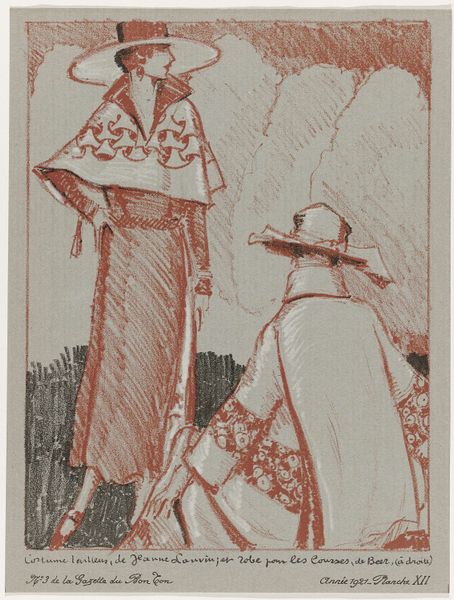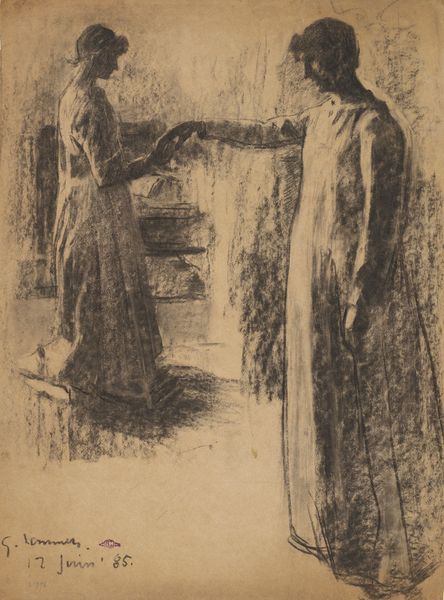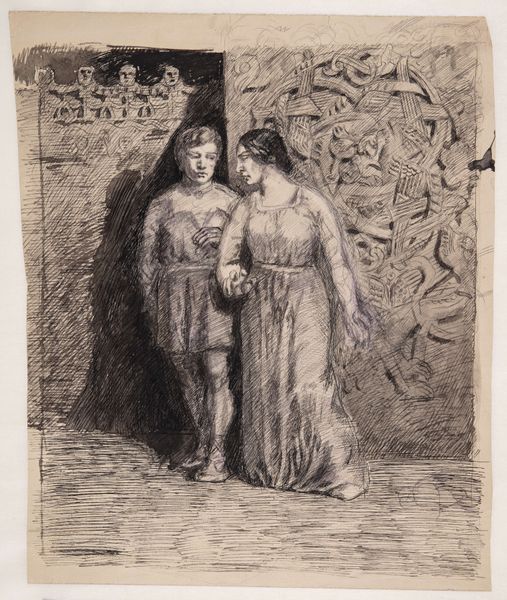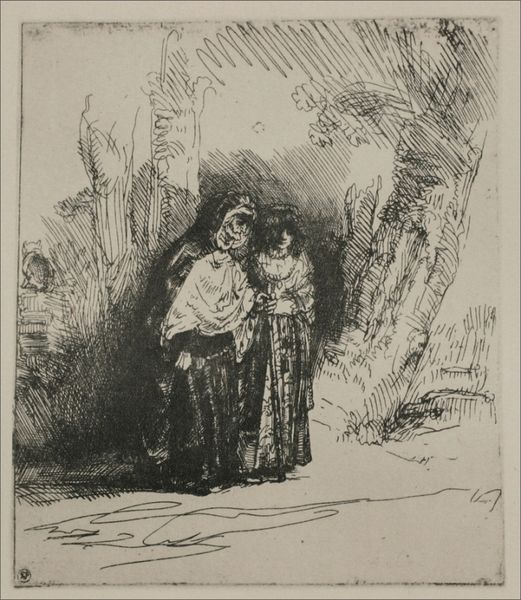
Gazette du Bon Ton, 1921 - No. 3, Pl. XI: Manteau du soir, de Worth; et robes de dîners, de Doeuillet 1921
0:00
0:00
print, etching
#
art-deco
# print
#
etching
#
etching
Dimensions: height 246 mm, width 186 mm
Copyright: Rijks Museum: Open Domain
Curator: Here we have an etching from 1921, "Gazette du Bon Ton, No. 3, Pl. XI: Manteau du soir, de Worth; et robes de dîners, de Doeuillet." It gives us a glimpse into the world of Parisian high fashion. Editor: It feels staged, almost theatrical, with those distant figures presented like mannequins. There's a distinct lack of warmth in this composition. The fabric almost looks like crumpled paper instead of draped silk. Curator: The Gazette du Bon Ton, published between 1912 and 1925, catered to an elite readership eager to follow the latest styles from leading designers. It was as much about cultural capital as clothing. Look how this print emphasizes not just the dress design, but also the posture and the setting, thereby signaling how it needs to be received, digested, and reproduced in upper class circles. Editor: And in doing so, reinforces class hierarchies, creating aspiration and, let’s be honest, exclusion. We’re seeing codes of privilege being meticulously laid out for the initiated, as well as the observers—us, looking in on them almost a century later! These visual codes serve a larger purpose of power. Note also how all of this occurs right after WWI where conspicuous consumption becomes particularly contentious. Curator: That’s a valid point, it shows the context that led to these pieces of material culture. I’m also interested in the contrast between the highly finished dresses and the sketch-like quality of the background, which perhaps speaks to the changing perception and the rise of commercial artistic practices during that period. This etching might reflect evolving ideas of craftsmanship. Editor: The anonymity of the figures further adds to the detachment. They are almost placeholders, their identities less important than the clothes. This feels so deliberate, a commentary on the depersonalization of fashion as an industry? A critical evaluation of its role in constructing, or maybe deconstructing, identity? Curator: Ultimately, it's a potent symbol of a specific time, reflecting both artistic and social values. A great peek into an industry establishing itself and seeking power. Editor: Yes, it really lays bare those unspoken dynamics. It gives me something to think about.
Comments
No comments
Be the first to comment and join the conversation on the ultimate creative platform.
